|
Visit our keyboard shortcuts docs for details
Learn about these amazing organisms that live in some of the hottest environment on earth—including in Yellowstone's hydrothermal features. The hydrothermal features of Yellowstone are magnificent evidence of Earth’s volcanic activity. Amazingly, they are also habitats in which microscopic organisms called thermophiles—“thermo” for heat, “phile” for lover—survive and thrive. Grand Prismatic Spring at Midway Geyser Basin is an outstanding example of a hydrothermal system that is teaming with thermophilic microbial life. Visitors marvel at its size and brilliant colors. Yet, those colors are due to the microbes and up-close examples can be readily seen on the boardwalk that crosses a vast habitat for thermophilic microbes. Nourished by energy and chemical building blocks available in the hot springs, microbes construct vividly colored communities. Living with these microscopic life forms are larger examples of life in extreme environments, such as mites, flies, spiders, and plants. For thousands of years, people have likely wondered about these extreme habitats. The color of Yellowstone’s superheated environments certainly caused geologist Walter Harvey Weed to pause, think, and even question scientists who preceded him. In 1889, he wrote: There is good reason to believe that the existence of algae of other colors, particularly the pink, yellow and red forms so common in the Yellowstone waters, have been overlooked or mistaken for deposits of purely mineral matter.
Today, many scientists study Yellowstone’s thermophiles. Some of these microbes are similar to the first life forms capable of oxygenic photosynthesis—the process of using sunlight to convert water and carbon dioxide to oxygen, sugars, and other by-products. These life forms, called Cyanobacteria, began to create an oxygen-rich atmosphere that would eventually support human life. Cyanobacteria are found in some of the colorful mats and streamers of Yellowstone’s hot springs and are typically responsible for the orange-colored sponge-like mats in alkaline springs, like Grand Prismatic. The production of oxygen by Cyanobacteria forever changed Earth and created numerous new opportunities for life to evolve, including animals (us) that require oxygen. 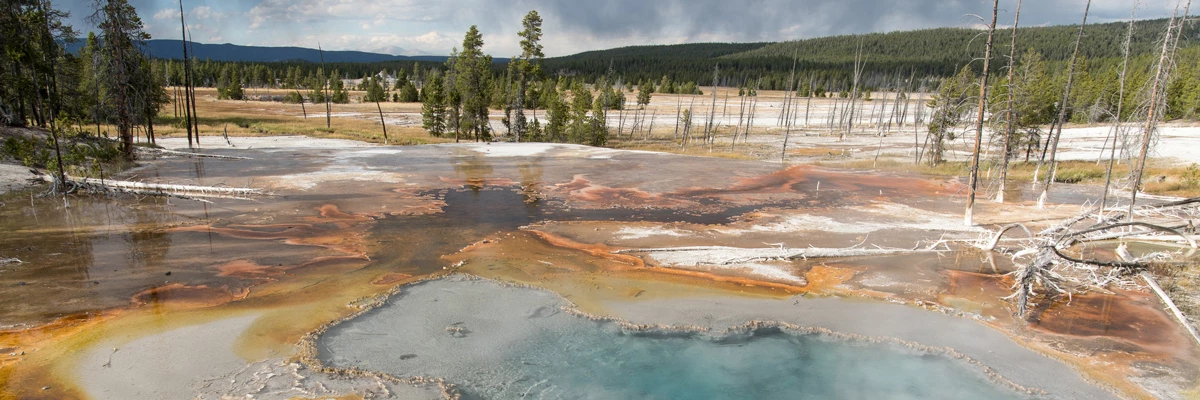
NPS/Jim Peaco 
Mary Ann Franke Thermophiles in the Tree of LifeIn the last few decades, microbial research has led to a revised tree of life, far different from the one taught before. The new tree combines animal, plant, and fungi in one branch. The other two branches consist solely of microorganisms, including an entire branch of microorganisms not known until the 1970s—the Archaea. Dr. Carl Woese first proposed this “tree” in the 1970s. He also proposed the new branch, Archaea, which includes many microorganisms formerly considered bacteria. The ancestor of the Bacteria, Archaea, and Eukarya is inferred to be where the blue, red, and green lines connect. Organisms that branch closest to this ancestor are hyperthermophiles, which thrive in water above 176°F (80°C), indicating life may have arisen in hot environments on the young Earth. Relevance to YellowstoneAmong the earliest organisms to evolve on Earth were microorganisms whose descendants are found today in extreme high-temperature, and in some cases acidic, environments, such as those in Yellowstone. Their history exhibits principles of ecology and ways in which geologic processes might have influenced biological evolution. About MicrobesOther life forms—the Archaea—predated Cyanobacteria and other photosynthesitic organisms. Archaea can live in the hottest, most acidic conditions in Yellowstone; their ancestors are considered among the very earliest life forms to have evolved on Earth. Yellowstone’s thermophiles and their environments provide a living laboratory for scientists, who continue to explore these extraordinary organisms. Researchers know that many mysteries of Yellowstone’s extreme environments remain to be revealed. Regardless of scientific advances, visitors and explorers in Yellowstone can still relate to something else written about Yellowstone, more than a century ago (Weed, 1889): The vegetation of the acid waters is seldom a conspicuous feature of the springs. But in the alkaline waters that characterize the geyser basins, and in the carbonated, calcareous waters of the Mammoth Hot Springs, the case is otherwise, and the red and yellow tinges of the algae combine with the weird whiteness of the sinter and the varied blue and green of the hot water to form a scene that is, without doubt, one of the most beautiful as well as one of the strangest sights in the world. Science Articles on ThermophilesSource: NPS DataStore Collection 7681. To search for additional information, visit the NPS DataStore. 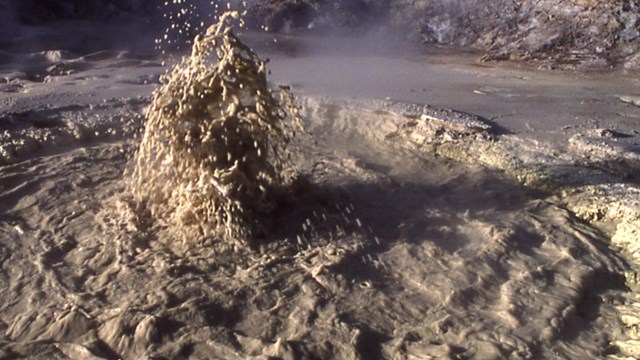
Thermophilic Archaea
Archaea are the most extreme of all extremophiles. 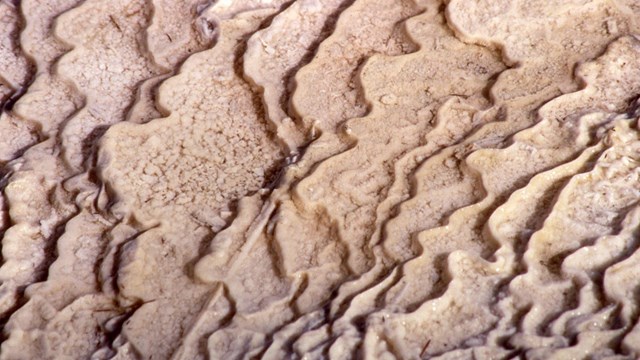
Thermophilic Bacteria
Almost all hot springs and geysers host thermophilic bacteria. 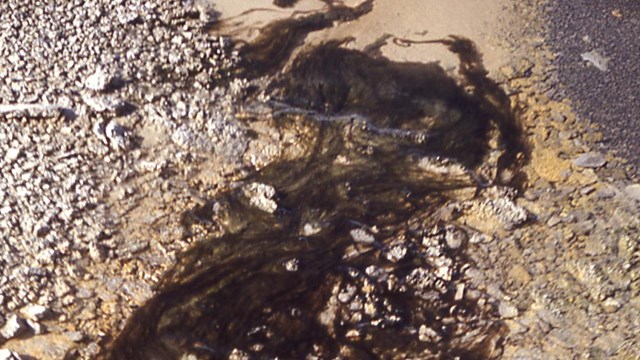
Thermophilic Eukarya
Microscopic plants and animals live in the extreme environments of Yellowstone's hydrothermal features. 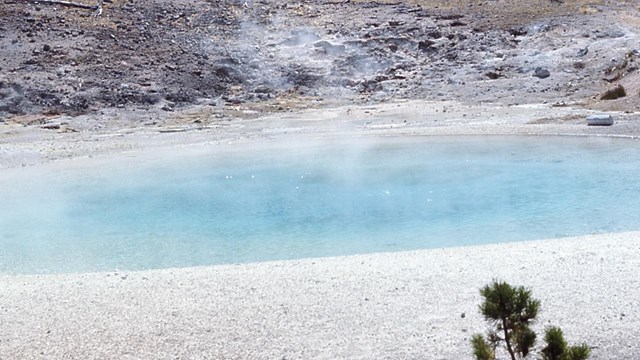
Thermophilic Viruses
Viruses, a logical part of thermophilic ecosystems, have been found in some pools in Yellowstone. 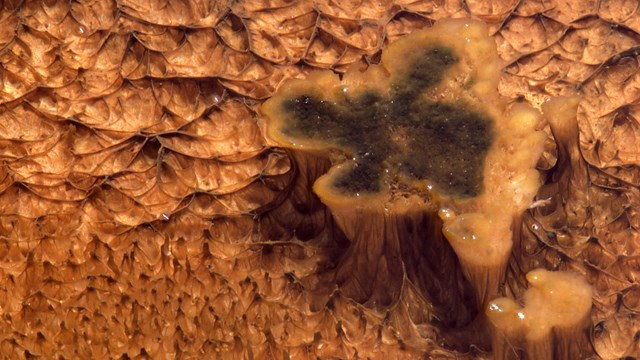
Thermophilic Communities
Thermophilic communities are very diverse, depending on the microbes living there, the pH, and the water temperature. 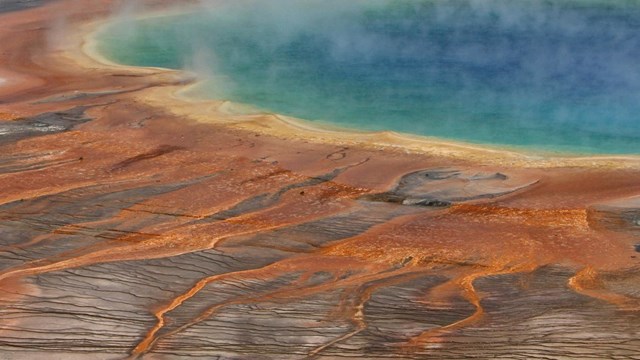
Hydrothermal Systems
Yellowstone's hydrothermal systems are the visible expression of the immense Yellowstone volcano. 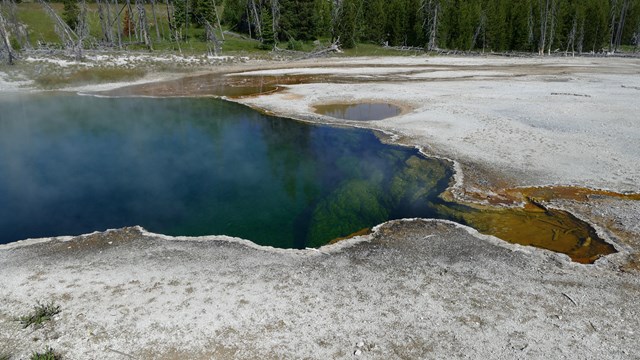
Hydrothermal Features
Learn about hot springs, geysers, mudpots, and fumaroles. 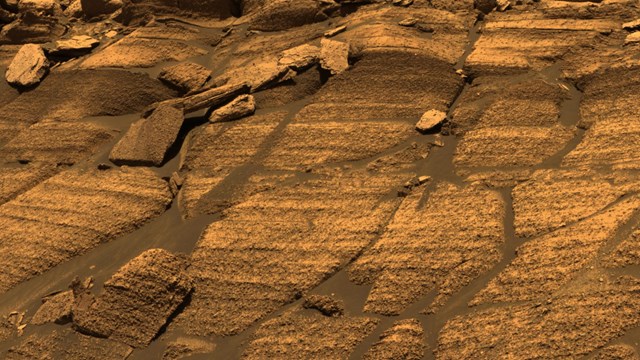
Thermophiles in Time and Space
Yellowstone's hydrothermal features and thermophilic communities are studied by scientists searching for evidence of life on other planets. 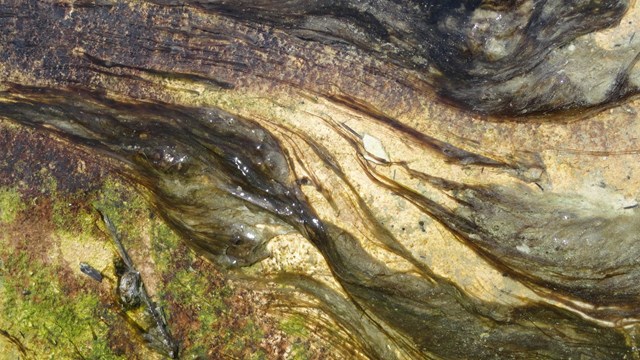
Bioprospecting
Bioprospecting is the discovery of useful scientific information from genetic or biochemical resources. 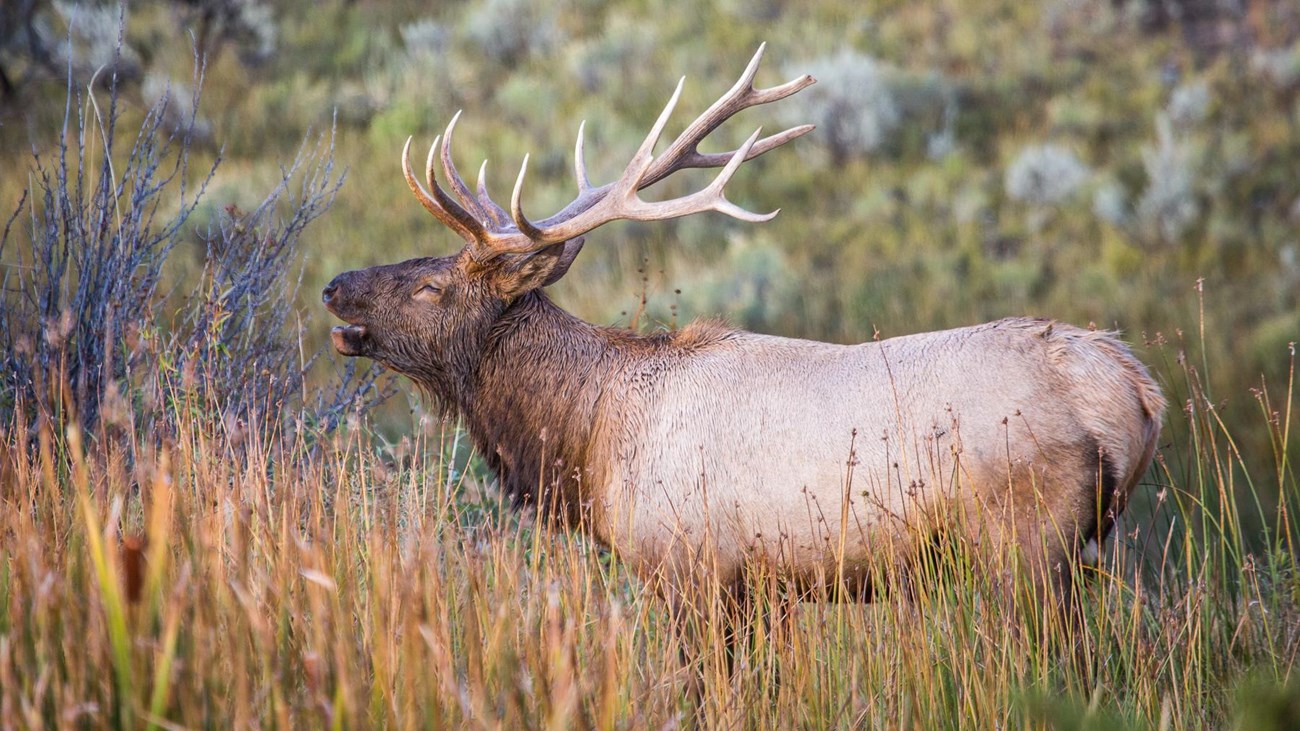
Nature
Discover the natural wonder of Yellowstone, from the geology beneath the plant communities to the animals migrating through the ecosystem. |
Last updated: April 17, 2025
